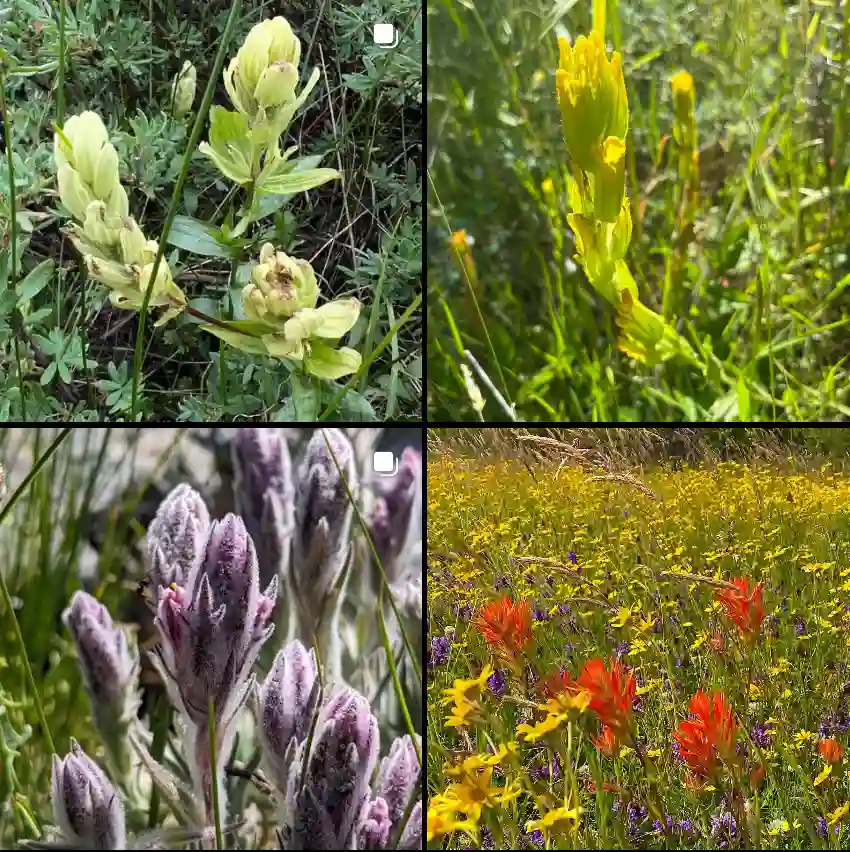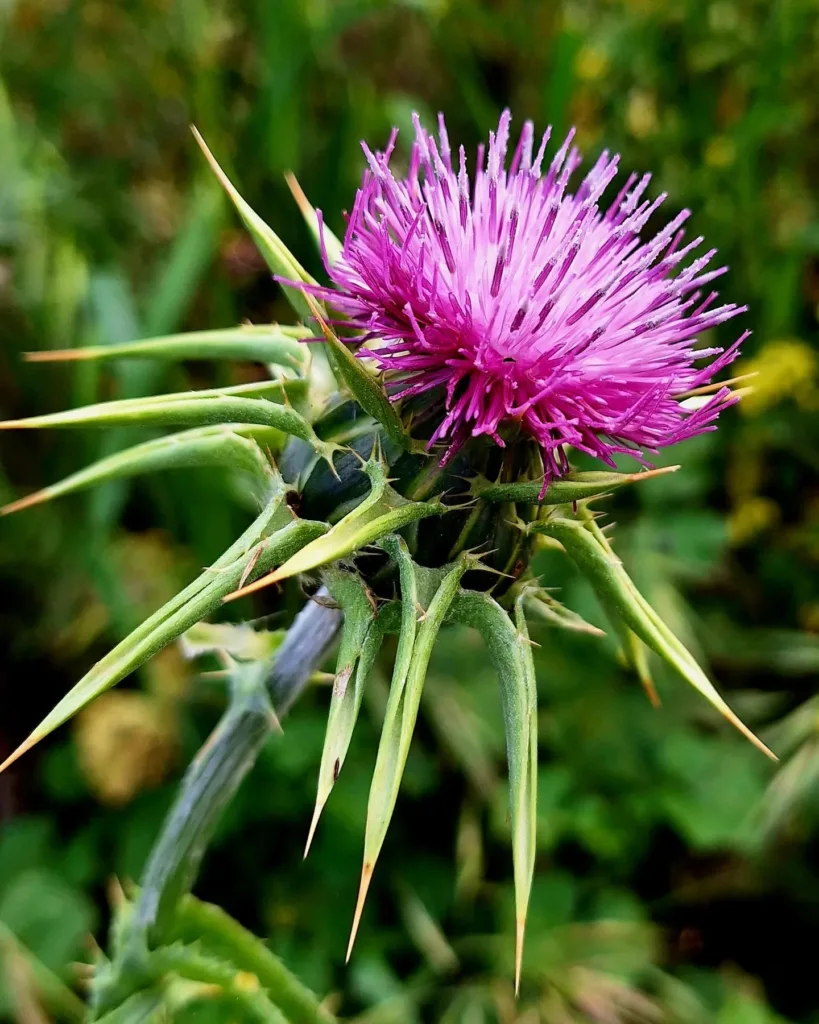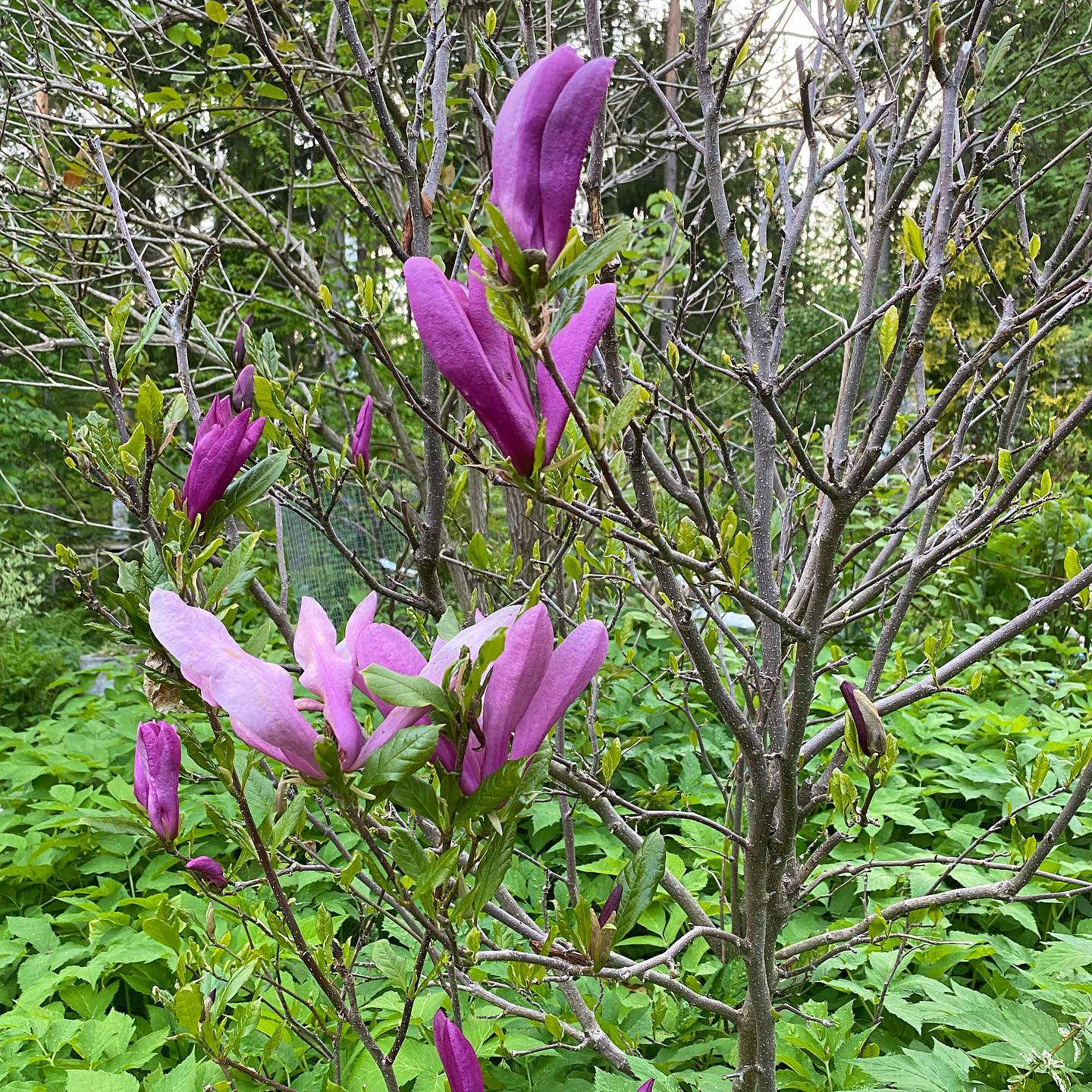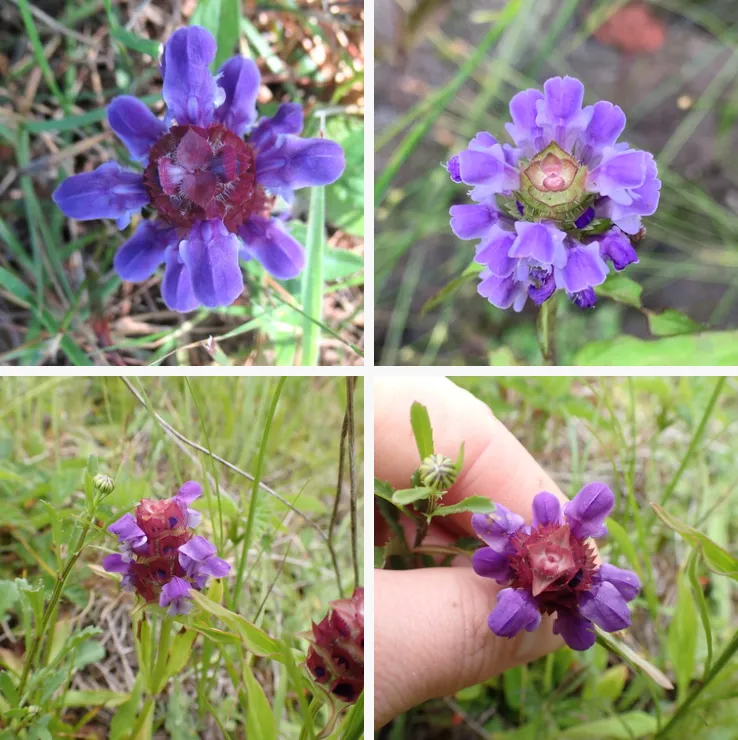1. Introduction: Discovering the Aconite-Leafed Begonia
Begonia aconitifolia, often referred to as the Aconite-Leafed Begonia due to its distinctive foliage, stands as a captivating and popular species within the diverse Begonia genus. This cane-type begonia is celebrated primarily for its striking leaves and elegant, upright growth habit, making it a favored choice for both novice and experienced plant enthusiasts. Its unique place in cultivation is largely due to its remarkable visual appeal, which is evident even when the plant is not in bloom. This characteristic sets it apart from many other begonia varieties that are primarily grown for their floral displays.
The plant’s distinctive palmately lobed leaves, adorned with intricate silvery markings, and its robust, cane-like stems contribute significantly to its ornamental value. Unlike many begonias where the focus is on showy flowers, the aesthetic appeal of
Begonia aconitifolia lies predominantly in its unique foliage and architectural form. Observations indicate that the flowers of cane begonias, including B. aconitifolia, are not particularly prominent or attractive, suggesting that cultivation efforts should prioritize conditions that promote robust leaf development and healthy stem growth over maximizing flower production. This understanding is fundamental to appreciating and successfully cultivating this particular begonia, guiding growers to focus on its inherent beauty as a foliage plant.
2. Botanical Profile: Unveiling Begonia aconitifolia
Scientific Classification
Begonia aconitifolia holds a precise position within the botanical hierarchy, providing a foundation for its scientific understanding and identification.
| Classification Level | Detail |
| Kingdom | Plantae |
| Clade | Tracheophytes, Angiosperms, Eudicots, Rosids |
| Order | Cucurbitales |
| Family | Begoniaceae |
| Genus | Begonia |
| Section | Latistigma |
| Species | B. aconitifolia |
| Authority | A. DC. (Alphonse Pyramus de Candolle) |
| Year Published | 1859 |
This structured classification highlights its relationship to other plant groups and its specific identity within the vast Begonia genus.
Synonyms
Historically, Begonia aconitifolia has been known by several other scientific names, which can be useful for cross-referencing and understanding older botanical literature. These synonyms include:
- Begonia faureana Garnier
- Begonia faureana var. argentea Linden
- Begonia faureana var. metallica Rodigas
- Begonia kimusiana C. Chev.
- Begonia sceptrum Rodigas
Native Habitat, Distribution & Growth Form
Begonia aconitifolia is endemic to Brazil, primarily found in the state of Rio de Janeiro and within the Atlantic Forest biome. Its natural environment is characterized by humid, subtropical conditions, where it thrives in the shaded understories or along the edges of forests. The plant prefers well-drained, organic-rich soils, which is typical for species originating from wet tropical biomes.
This species is a quintessential cane-like begonia, distinguished by its thick, upright stems that often exhibit a reddish hue, reminiscent of bamboo. As the plant matures, these stems develop a woody base and feature regularly spaced swelling nodes.
Begonia aconitifolia can achieve significant vertical growth, typically reaching heights of 1 to 1.5 meters (approximately 3.3 to 5 feet). Some reports even suggest potential heights of up to 4 feet or, under optimal cultivation, as much as 10 feet. A particularly noteworthy characteristic, uncommon among many cane-like begonias, is its capacity to develop a caudex—a thickened stem base—as it matures. This feature adds to its unique appeal and contributes to its resilience over time, distinguishing it from other members of its group.
It is important to note that some sources may incorrectly state its native habitat as Southeast Asia or describe a mounding growth habit. However, this information is contradicted by multiple authoritative botanical references that consistently identify its origin as Brazil and its growth form as upright and cane-like, reaching substantial heights. Therefore, information regarding a Southeast Asian origin or a mounding growth habit is not consistent with established botanical consensus for
Begonia aconitifolia.
Distinctive Physical Characteristics
The visual attributes of Begonia aconitifolia are a primary reason for its popularity among plant enthusiasts.
- Leaves: The most striking feature of B. aconitifolia is its foliage. The leaves are palmately lobed, deeply cut, and often asymmetrical, creating an intricate and delicate appearance. The base color of the leaves ranges from mid-green to dark green, dramatically contrasted by striking silvery-white markings. These markings can vary significantly, appearing as sparse, thin streaks, clustered spots, or even dense clusters that cover nearly the entire leaf blade, typically sparing only the veins. The upper surface of the leaf can have a velvety texture, and the underside often exhibits a reddish tinge. Juvenile leaves typically present a lighter green base with a pale pink to reddish hue. The specific epithet “aconitifolia” directly references the resemblance of its deeply lobed foliage to that of the Aconitum (Monkshood) genus. This etymological detail serves as a powerful and immediate visual descriptor, helping to convey the plant’s unique leaf shape and differentiate it from other begonia types.
- Stems: The plant is characterized by its thick, upright, cane-like stems, which are often described as bamboo-like and frequently display a reddish coloration. As the plant matures, these stems develop a woody base and feature regularly spaced swelling nodes.
- Flowers: Begonia aconitifolia produces panicles, or clusters, of flowers. These blooms are primarily described as white, though they are often accented by delicate dashes of pink or can appear as a mix of white and pink. Male flowers typically have 2 tepals, while female flowers possess 5 tepals. Blooming generally occurs during the warmer months, from late spring to early autumn, but the plant can flower sporadically throughout the year when cultivated indoors under suitable conditions. Despite their presence, the flowers are not considered particularly showy, reinforcing the plant’s primary value as an ornamental foliage specimen.
3. Cultivating Success: Comprehensive Care Guide
Light Requirements: Finding the Perfect Spot
Begonia aconitifolia thrives in bright, indirect light, a condition that closely mimics its natural habitat as an understory plant on moist rainforest floors. Ideally, it requires approximately 3-4 hours of bright but filtered sunlight daily to support lush foliage development and encourage potential blooms. For indoor cultivation, the most suitable placement is typically near an east-facing window, which provides gentle morning sun, or a south-facing window where the light is effectively filtered by sheer curtains or other means to prevent harsh, direct exposure.
The management of light is not merely about the plant’s survival but significantly influences its aesthetic form. Insufficient light can lead to undesirable outcomes such as leggy and sparse stems, the production of smaller new leaves, stunted overall growth, and a noticeable leaning towards a light source. This etiolation detracts from the plant’s characteristic upright and bushy appearance. Conversely, while optimal indirect light promotes healthy growth, too much direct sun can be detrimental, causing wilting, pale leaves, scorched tips, burnt patches on the foliage, and rapid soil drying. Direct sunlight can lead to sunburn, manifesting as crispy leaf edges, white or yellow patches, and brown spots between the foliage veins. Therefore, strategic placement and light management are crucial for achieving and maintaining the plant’s desired compact and visually appealing form. To promote balanced growth, it is beneficial to regularly rotate the pot every few weeks, ensuring all sides of the plant receive even light distribution. During periods of naturally lower light, such as winter, supplementing with a grow light can help maintain the plant’s vigor and prevent leggy growth.
Watering Wisdom: Mastering Moisture Levels
Achieving the correct watering balance is often cited as the most challenging yet critical aspect of Begonia aconitifolia care. This plant requires consistent moisture but is exceptionally sensitive to overwatering, which is a leading cause of root rot. The plant’s health and survival are profoundly determined by precise watering practices.
The most reliable method for watering is to allow the top inch of the soil to dry to the touch before rewatering. It is generally advisable to err on the side of slight underwatering rather than overwatering; observing a very slight droop in the leaves can serve as an indicator that the plant is ready for water. However, it is important to prevent the soil from drying out completely, as this can lead to crispy leaf edges and leaf drop.
Excellent drainage is paramount to prevent waterlogging. Always ensure that the pot has sufficient drainage holes to allow excess water to escape freely. When watering, direct the water to the soil at the base of the plant, taking care to avoid getting water on the leaves, especially when grown indoors. Water sitting on the foliage can lead to leaf spot, fungal diseases, and rot. During the cooler, slower-growth months of fall and winter, it is advisable to reduce the frequency of watering to align with the plant’s decreased metabolic activity, further preventing root rot. This careful approach to watering directly mitigates the plant’s most common vulnerabilities, making it the cornerstone of successful cultivation.
Soil Secrets: The Ideal Growing Medium
The choice of soil mix for Begonia aconitifolia is not merely a preference but a fundamental determinant of successful watering and overall plant health. This species thrives in a light, well-drained, rich, and slightly acidic soil mix, with an ideal pH range typically between 5.5 and 6.5. Good aeration within the soil is essential to prevent compaction and ensure healthy root development.
A soilless potting mix is highly recommended, heavily amended with components that enhance drainage and aeration while still retaining adequate moisture. Ideal amendments include perlite, peat moss, leaf mold, or pumice. Some growers find success with commercial mixes like Happy Frog and Promix HP, often with additional perlite or pumice to further improve drainage. To enhance drainage and prevent water from pooling at the bottom of the pot, it can be beneficial to add a layer of stones or broken terracotta shards beneath the potting mix.
The type of container also plays a role in soil moisture management. Clay pots are often preferred over plastic pots for begonias, as clay’s porous nature helps wick excess moisture away from the soil, thereby reducing the risk of waterlogging. While plastic pots are acceptable, they tend to retain moisture for longer periods, necessitating more careful watering practices. For outdoor planting in garden beds, particularly in heavier clay soils, it is crucial to amend the soil thoroughly with grit, such as agricultural sand or vermiculite, to improve drainage and aeration. The optimal soil composition directly facilitates proper watering, allowing the plant to receive consistent moisture without sitting in stagnant, anoxic conditions, which are the primary cause of root rot. This foundational step simplifies overall plant maintenance and promotes long-term health by mitigating the risks associated with the plant’s sensitivity to moisture.
Humidity & Temperature: Mimicking its Tropical Home
Begonia aconitifolia thrives in high humidity, a direct reflection of its native rainforest habitat in Brazil, where humidity levels can naturally reach around 75%. While some cane begonia hybrids may exhibit more tolerance to drier indoor environments,
B. aconitifolia itself significantly benefits from elevated humidity. To increase ambient humidity, consider using a plant humidifier in the vicinity or placing the pot on a pebble tray filled with water, ensuring the pot does not sit directly in the water. It is crucial to avoid misting the leaves directly, as the foliage is sensitive to excessive surface moisture and can become susceptible to fungal diseases and rot.
This tropical plant prefers consistently warm temperatures. Begonia aconitifolia thrives in daytime temperatures ranging from 70° to 75°F (21° to 24°C) and nighttime temperatures no lower than 60°F (15°C). It should be protected from frost and extreme temperature changes, as it is sensitive to cold. Maintaining these conditions helps to mimic its natural, stable tropical environment, promoting vigorous growth and overall plant health.
Fertilization: Nourishing for Vigor
Begonia aconitifolia is considered a relatively heavy feeder, requiring regular fertilization to support its robust growth and continuous foliage production. Slow growth or a lack of vigor can often signal a need for nutrients.
For container-grown plants, a balanced liquid fertilizer (e.g., 20-20-20 NPK ratio) diluted to half strength is recommended every other week during the active growing season, typically from late spring through early autumn. Some growers find success with weekly, weakly diluted applications. If the plant is grown primarily for its foliage, a fertilizer higher in nitrogen can be beneficial to promote lush leaf development. For plants in garden beds, a balanced slow-release granular fertilizer applied once a month during the blooming period can be effective.
It is advisable to prepare the soil with compost or granular fertilizer before planting. During the winter months, when the plant’s growth naturally slows, fertilization should be reduced or ceased entirely to prevent over-fertilization and potential root burn. Crispy brown spots on leaves can be a sign of fertilizer burn, indicating that the next scheduled application should be skipped. Always follow the recommended dosage on the fertilizer package and water the plant after applying granular fertilizer.
Pruning and Propagation: Shaping and Expanding Your Collection
Pruning Begonia aconitifolia is beneficial for maintaining a desirable shape, encouraging bushier growth, and managing its upright, cane-like habit. As a cane begonia, pinching the tops of younger plants (around 6 inches tall) can promote branching and a fuller appearance. For older or leggy plants, stems can be cut back by about half, or just above a node, to encourage new growth points. Dead or excessively tall canes can be removed down to the soil line. When pruning, make clean, angled cuts just above a leaf or flower node.
Begonia aconitifolia is relatively easy to propagate, primarily through stem cuttings. This allows for the expansion of a collection or the rejuvenation of an older plant. To propagate, take a healthy stem cutting, typically 5-10 cm (2-4 inches) long. Remove any lower leaves to prevent rot once planted. The cut end can optionally be dipped in rooting hormone to encourage faster root development. Plant the cuttings in a moist, well-draining propagation mix, such as perlite and peat moss, or even long-leaf sphagnum moss and perlite. Covering the cuttings with a clear plastic bag or humidity dome can help maintain the high humidity necessary for rooting. Cuttings can also be rooted in water, though this may take longer. Once roots develop, the plantlets can be transplanted into individual pots or back into the mother plant’s container to create a denser display.
Common Pests and Diseases: Identification and Management
Like many houseplants, Begonia aconitifolia can be susceptible to certain pests and diseases, though proper care can significantly reduce these risks. Maintaining good plant hygiene and regularly inspecting the plant for early signs of infestation are crucial for effective management.
- Pests: Common pests include mealybugs, spider mites, thrips, and occasionally slugs or snails.
- Mealybugs appear as white, fluffy, unarmored scales that feed on plant sap, leading to stunted growth and foliage damage. Early detection is key; isolate infested plants, spray with a hose to dislodge bugs, and follow up with insecticidal soap or diluted rubbing alcohol.
- Spider mites are tiny sap-sucking pests that cause stippling (tiny white or yellow dots) on leaves and can produce delicate webs. Treatment involves cleaning the plant to remove webs, trimming damaged foliage, and applying insecticidal soap or horticultural oil. Dehydrated plants are more susceptible to spider mites, emphasizing the importance of consistent watering.
- Thrips are elongated, small insects (yellow, brown, or black) with fringed wings. They cause damage by feeding on plant tissues. Pruning damaged growth and spraying with water can help dislodge them.
- Slugs and Snails create irregular holes in foliage and leave slime trails. Manual removal of affected foliage is often sufficient.
- Diseases: The most common disease concerns for Begonia aconitifolia are related to fungal issues, primarily due to improper watering and humidity.
- Root Rot and Stem Rot are frequently caused by overwatering and soggy soil conditions. Ensuring excellent drainage and allowing the topsoil to dry between waterings are the best preventative measures.
- Powdery Mildew can occur in conditions of poor air circulation combined with high humidity. Maintaining good air circulation and avoiding water on leaves can help prevent this. If detected, dusting with sulfur powder can be effective.
- Leaf Spot is another fungal issue often exacerbated by water sitting on the leaves. Watering the soil directly helps mitigate this risk.
Regular inspection, prompt action upon detection of issues, and adherence to optimal environmental conditions are the most effective strategies for maintaining a healthy and thriving Begonia aconitifolia.
Conclusion
Begonia aconitifolia, the Aconite-Leafed Begonia, stands out as a unique and rewarding plant primarily valued for its striking foliage and elegant, upright cane-like growth. Its distinctive palmately lobed leaves with silvery markings, coupled with its ability to develop a caudex as it matures, underscore its unique ornamental appeal within the diverse Begonia genus. This plant’s beauty is inherent in its structural form and intricate leaf patterns, rather than its relatively modest flowers, shaping the focus of its cultivation.
Successful cultivation hinges on a few critical environmental factors, with light and watering being paramount. Providing bright, indirect light is essential not only for the plant’s general health but also for actively sculpting its desired compact and bushy aesthetic, preventing the leggy growth that diminishes its visual charm. Similarly, mastering the delicate balance of consistent soil moisture without leading to waterlogging is the most crucial determinant of its survival, as Begonia aconitifolia is highly susceptible to root rot. This vulnerability is significantly mitigated by the choice of a well-draining, aerated soil mix, which acts as a foundational enabler for effective watering practices. Furthermore, maintaining high humidity and stable, warm temperatures, reflective of its Brazilian rainforest origins, is vital for its thriving.
By understanding these interconnected care principles—optimal light for form, precise watering for health, and appropriate soil for resilience—growers can ensure the long-term vigor and aesthetic appeal of Begonia aconitifolia. This comprehensive approach allows this unique Aconite-Leafed Beauty to flourish, offering a captivating display of foliage that enriches any indoor or shaded garden space.
If i die, water my plants!



